Birdathon Pinnacles
Editor’s Note: If you want to hear more Birdathon stories like this one, please come to our Birdathon 2019 Garden Party and Celebration on May 19. Learn more here.
by Ryan Gilpin and Melissa Orozco
Golden Gate Bird Alliance organized a birdathadon trip in Pinnacles National Park with a goal of seeing the elusive California Condor. The condor is one of those birds that probably we’ve seen before, but we could never be certain because they were so far away. Fortunately for us, Rusty Scalf quickly and effectively led us on a great hike with amazing views of condors.
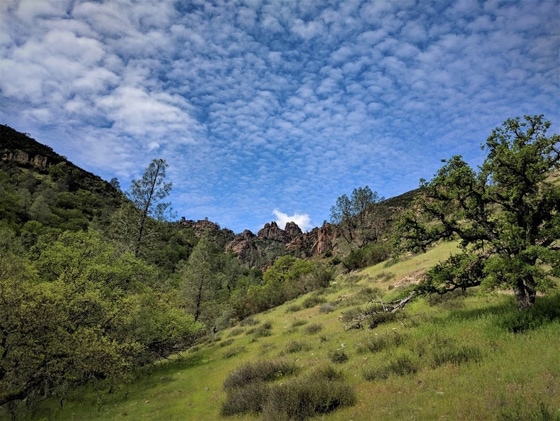
A small group of birders met at 9 AM on the east side of the park at the Visitor’s Center. The weather was mostly sunny and warm with temperatures in the upper 60s. We scanned through the Turkey Vultures soaring above while Acorn Woodpeckers called and flew back and forth between the oaks in the parking lot. As the group gathered up we had good views of a Bullock’s Oriole, Western Kingbirds and Western Bluebirds with Golden-crowned Sparrows and Spotted Towhee calling around us.
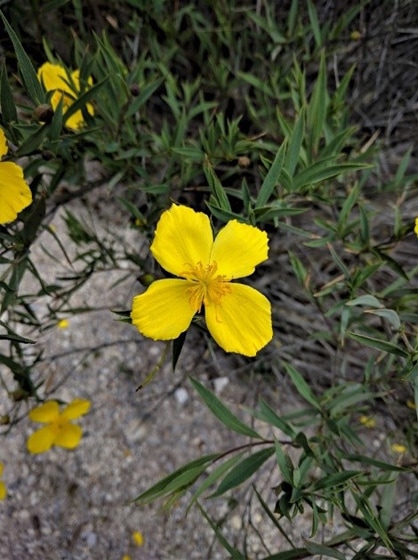
We consolidated in cars, drove up to Bear Gulch and started up the Condor Gulch Trail. The dense blue oak (Quercus douglasii) and gray pine (Pinus sabiniana) forest made for an easy hike up the ravine. Orange-crowned Warblers and Anna’s Hummingbird were calling and zipping back and forth. The first part of the walk was easily more about the wild flowers and plants than the birds. Rusty pointed out many great plants throughout the hike such as the big berry manzanita (Arctostaphylos glauca), California poppies (Eschscholzia californica), bush poppies (Dendromecon rigida), streambank springbeauty (Claytonia parviflora) and pipestem clematis (Clematis lasiantha). The wild flowers were great; it wasn’t a super bloom, but the wildflowers were reason enough for the walk.
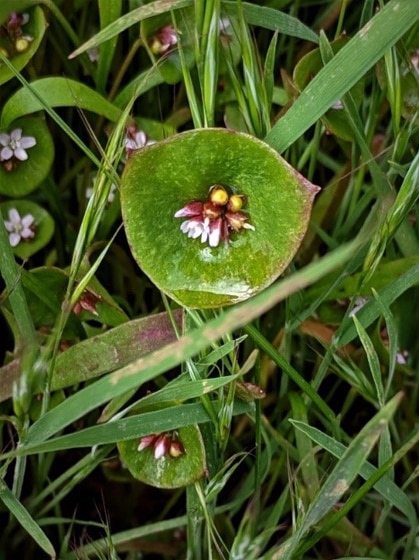
As the trail started getting steeper and the vegetation cleared, we had great views of the distinctive rhyolite cliff faces. Suddenly, “Condor!” and a bunch of pointing around us. Three birds flew over our heads, one went to the right where we lost track of it, while the other two flew to the cliffs. We got the scope on the rounded rock where they landed and found a fleshy face visible just over the top of the rock. Suddenly, the condor jumps off the rock and soars directly over us with her #26 clearly visible. Little Stinker was born at the San Diego Wild Animal Park in March 2013.
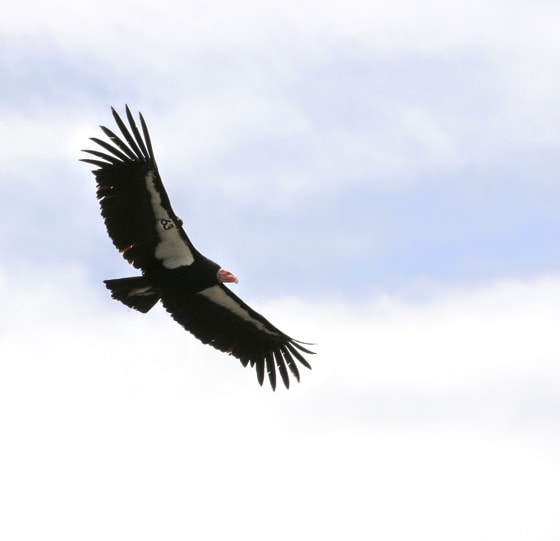
Then California Condor #692, which had previously been hidden, stepped on top of the rock showing off his purple #92 just above the white patch on his wing. He was born in 2013 at the Oregon Zoo. We spent several minutes admiring him before he followed Little Stinker directly over the top of us. We were struck not only by their size, but their grace. They seemed in no hurry, but flew with much more control and ease than the Turkey Vultures around them. The white marks on their wings and long fingers helped to easily distinguish them from the Turkey Vultures, but their flight pattern was particularly distinctive.
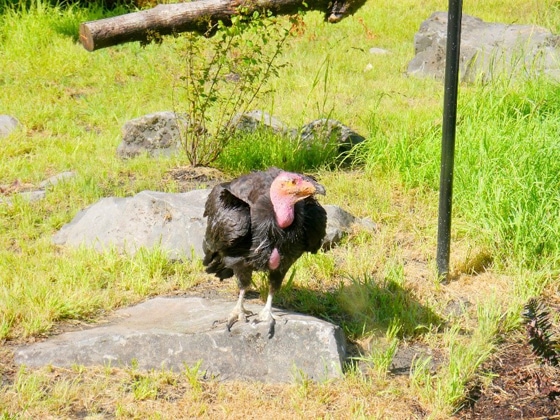
As we climbed our way up the switch backs, every 5 to 10 minutes someone would exclaim “Condor!”, and we would pause, scan the sky and admire a 9-10 foot wingspan soaring above us. Eventually we got high enough that we were even with, or looking down on the birds, seeing them from different angles. Condor #463 was the oldest bird on which we were able to read the tag number. He was born in 2008 in Idaho. The National Parks Service Condor Profiles lists condors #692, 463 and 726 (the three birds whose numbers we could read) as three birds that have a close friendship and are often seen together in the Pinnacles area.
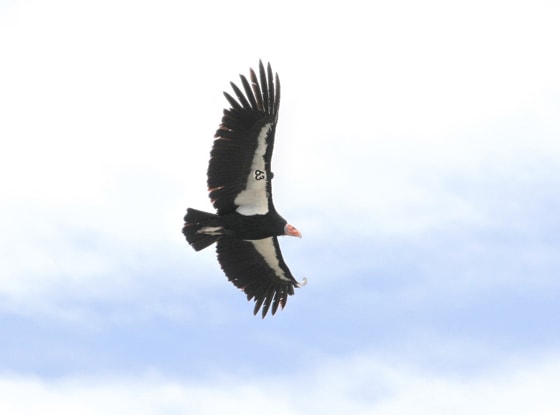
We arrived at a flat open space with wide-reaching views in all directions. Rusty told us that this was one of the main condor monitoring locations that is used to keep track of the birds in the park. We opened our lunches to the songs of California Thrashers and Canyon Wrens. White-throated Swifts and Violet-green Swallows zipped around us in seemingly every direction at once.
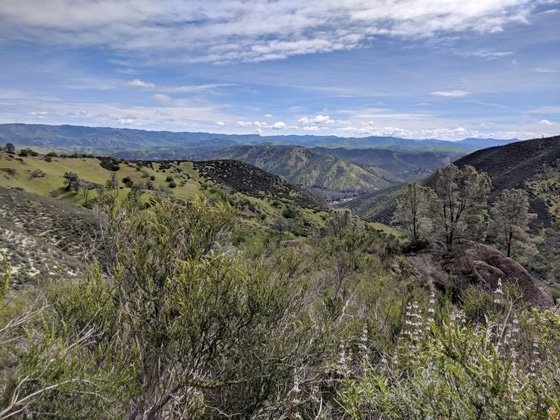
In total, we had approximately 12 viewings of the condors throughout the day. We didn’t see any condors on the way down. Every few minutes someone on the way up would ask us if we had seen any. We stopped to chat with them about where and when we had seen them and wished them luck. That day Rusty helped us have a great day of condor viewing, now we can say for sure that we have seen a California Condor. We want to take this opportunity to thank Rusty and Golden Gate Bird Alliance for putting on a great event.
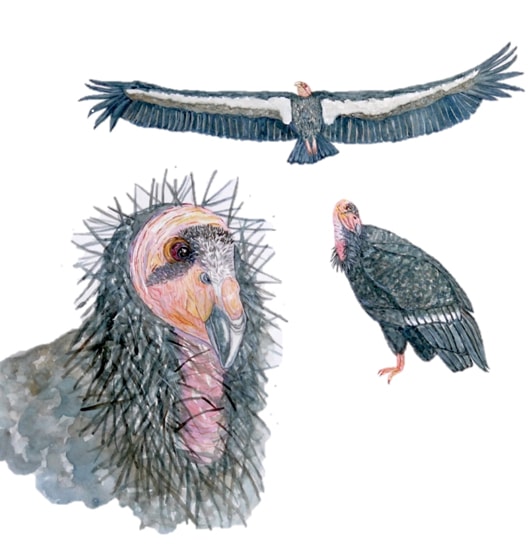
Ryan Gilpin is a soon-to-be Master Birder and is a consulting arborist at HortScience | Bartlett Consulting. Melissa Orozco is an artist. They live together with their dog, Acacia, in Berkeley.
